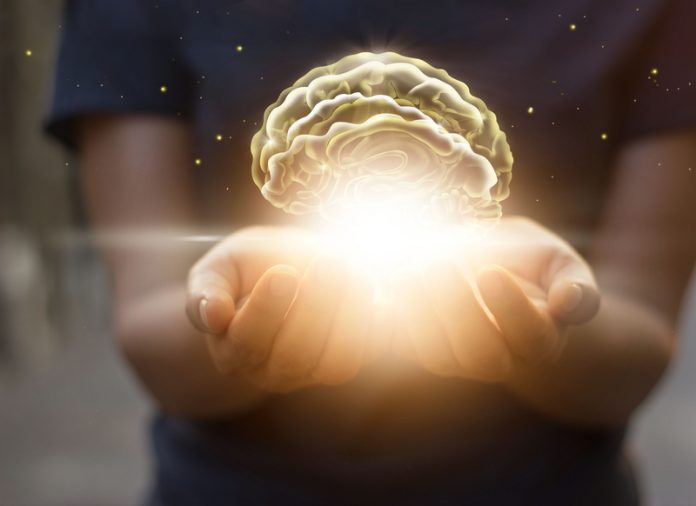Dr Gerry Morrow shares his thoughts on the rare, progressive neurodegenerative illness, Huntington’s disease (HD)
Few people predicted a cure for the rare, progressive neurodegenerative illness Huntington’s disease (HD). It is one of a range of pathologies caused by multiple repeating three base sequences. Specifically, HD is an autosomal dominant disease caused by an expanded CAG repeat in the first exon of the huntingtin gene (HTT) on chromosome 4. HTT is vital to the viability of neurons. In HD, mutant HTT (mHTT) aggregates in neurons leading to the expression of long glutamine tracts, a cellular proteinopathy, which ultimately causes cell death predominantly in the striatum and cortex of the brain. 1
Sufferers undergo progressive neurocognitive and psychiatric sequelae, including behavioural and mood changes, movement deficits, choreiform movements and ultimately death. 2
Age of disease onset is inversely proportional to the length of the CAG repeat meaning that people with a higher burden of CAG repeats are diagnosed under the age of 20, defined as juvenile Huntington’s disease. Juvenile HD is invariably more severe, and usually fatal within 20 years of diagnosis. Juvenile HD often presents with parkinsonian type rigidity, dystonia and bradykinesia, seizures and declining educational attainment. 3
The prevalence of HD is approximately 10 per 100,000, meaning that in the UK there are approximately 6,200 patients living with HD. Of these roughly 5% have juvenile HD, which translates as approximately 300 patients under the age of 20 years.
The diagnosis of HD is made on clinical grounds using the Unified Huntington Disease Rating Scale and subsequent genetic testing. 4
Previous efforts to treat HD focussed on the pathophysiological pathway with the aim of developing therapies to ameliorate symptoms. Sadly, these have met with limited success. 5 The current focus of research is on a disease modification approach, with the prospect of halting the decline and a potential cure.
Given that the underlying pathology is ascribed to a gene fault, researchers have seized on the possibility of either reducing the volume of mHTT circulating in the cerebrospinal fluid or even preventing the production of mHTT at source.
The first of these approaches has reached the phase 3 stage of a clinical trial with a medication called RG6042, which is an investigative antisense oligonucleotide treatment. RG6042 is a complementary molecule to HTT mRNA, which binds to the mRNA and signals protein destruction. Patients in this planned randomised controlled trial will have regular intrathecal administration of the RG6042 medication for two years.
Results from previous trial phases of 46 adults with early-stage Huntington’s demonstrated a reduction of mHTT in cerebrospinal fluid (CSF) by up to 60%. This difference corresponds to an estimated 55% to 85% reduction of mHTT in the brain cortex and 20% to 50% in the caudate (a deep region) of the brain. 6 Reducing mHTT should translate into a commensurate reduction in disease impact in HD.
The second option entails a technique called gene silencing. Gene silencing of mHTT involves epigenetic modification of the expression of the mHTT gene. This leads to inactivation of the mechanism of toxic proteins, which cause the death of neurons. This therapy then prevents the manufacture of abnormal HTT protein.
A gene-silencing treatment called AMT-130 is at an early stage of development. AMT-130 is an artificial microRNA, which targets HTT mRNA. Early results demonstrate effectiveness in animal models of the widespread localisation of AMT-130 in the brain and spinal cord, following a single injection. Phase 1 and 2 studies of this therapy are about to commence shortly.
These interventions of destroying abnormal genetic material and gene silencing, offer the prospect of a perspective shift towards the prospect of cure and that there may be hope on the horizon for patients and families of people with HD.
References
1 Roos RAC Huntington’s disease: a clinical review Orphanet J Rare Dis. 2010; 5: 40. Published online 2010 Dec 20. doi: 10.1186/1750-1172- 5-40.
2 Kirkwood SC et al Progression of symptoms in the early and middle stages of Huntington Disease Arch Neurol. 2001;58(2):273-278. doi:10.1001/archneur.58.2.273.
3 Quarrell O et all The Prevalence of Juvenile Huntington’s disease: a review of the literature and meta-analysis Version 1. PLoS Curr. 2012 July 20. doi: 10.1371/4f8606b742ef3.
4 McCusker E and Loy CT Huntington Disease: the complexities of making and disclosing a clinical diagnosis after premanifest genetic testing Tremor Other Hyperkinet Mov (N Y). 2017 doi: 10.7916/D8PK0TDD.
5 Coppen E and Roos RAC Current Pharmacological approaches to reduce chorea in Huntington’s disease Drugs. 2017; 77(1): 29–46. 2016. doi: 10.1007/s40265-016-0670-4.
6 US Library Clinical Trials. A study to evaluate the efficacy and safety of intrathecally administered RG6042 in patients with manifest Huntington’s disease. Available from https://clinicaltrials.gov/ct2/show/NCT03761849 .
7 Miniarikova J et al Design, Characterization, and Lead Selection of Therapeutic miRNAs Targeting Huntingtin for Development of Gene Therapy for Huntington’s Disease Molecular Therapy – Nucleic Acids. 2016 5, e297; doi:10.1038/mtna.2016.7.
Dr Gerry Morrow
Medical Director
Clarity Informatics
Tel: +44 (0)845 113 1000











